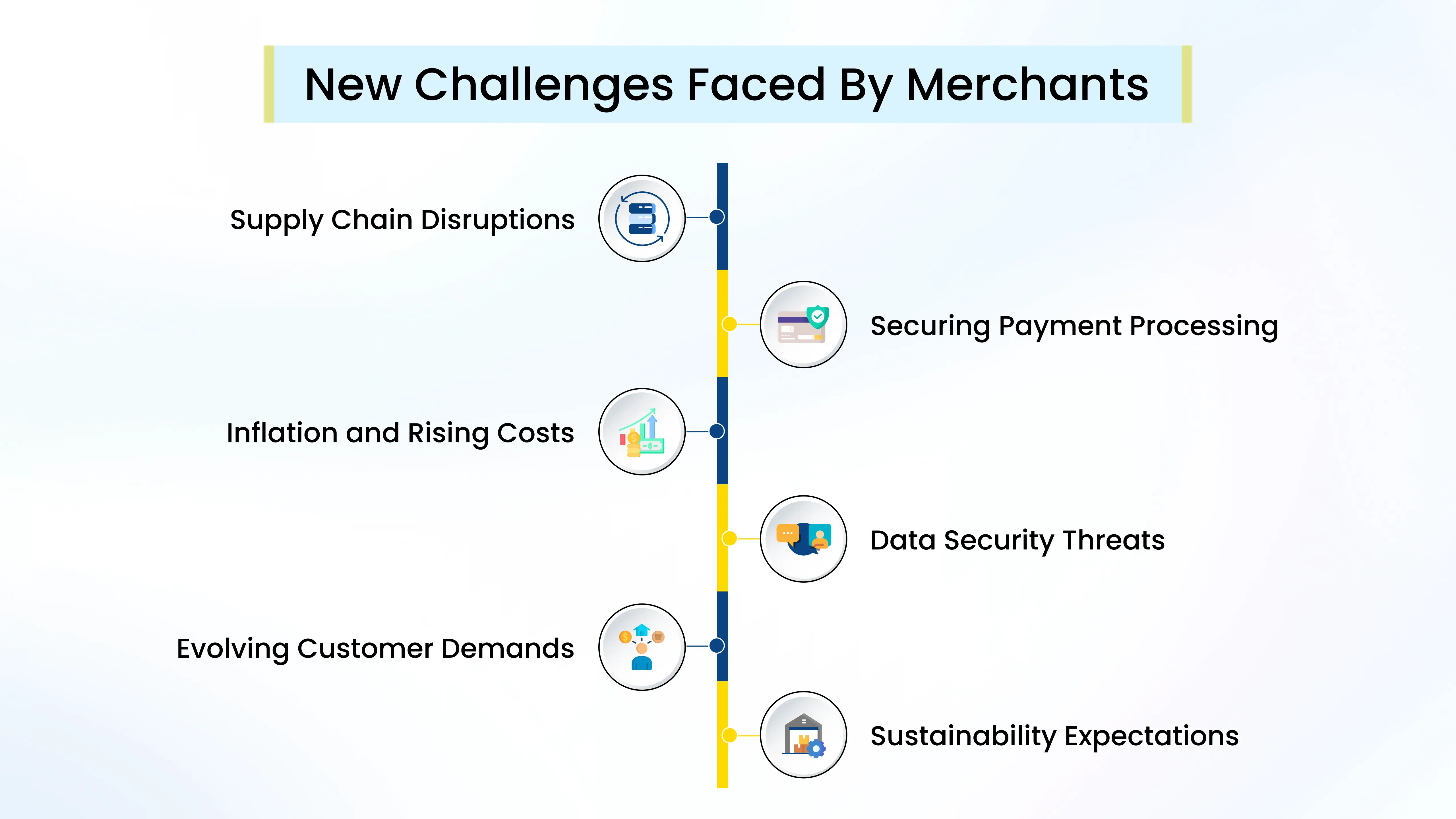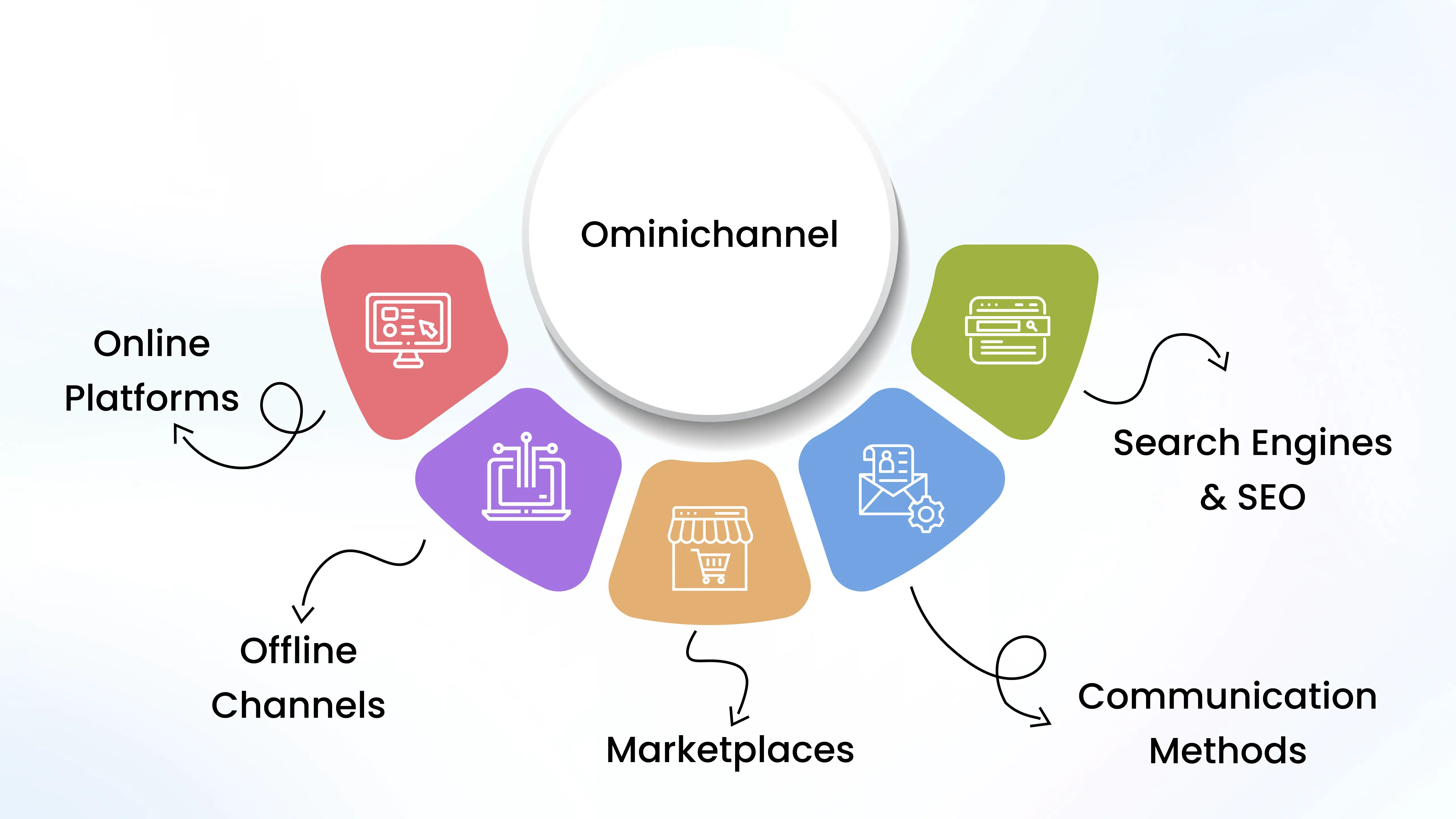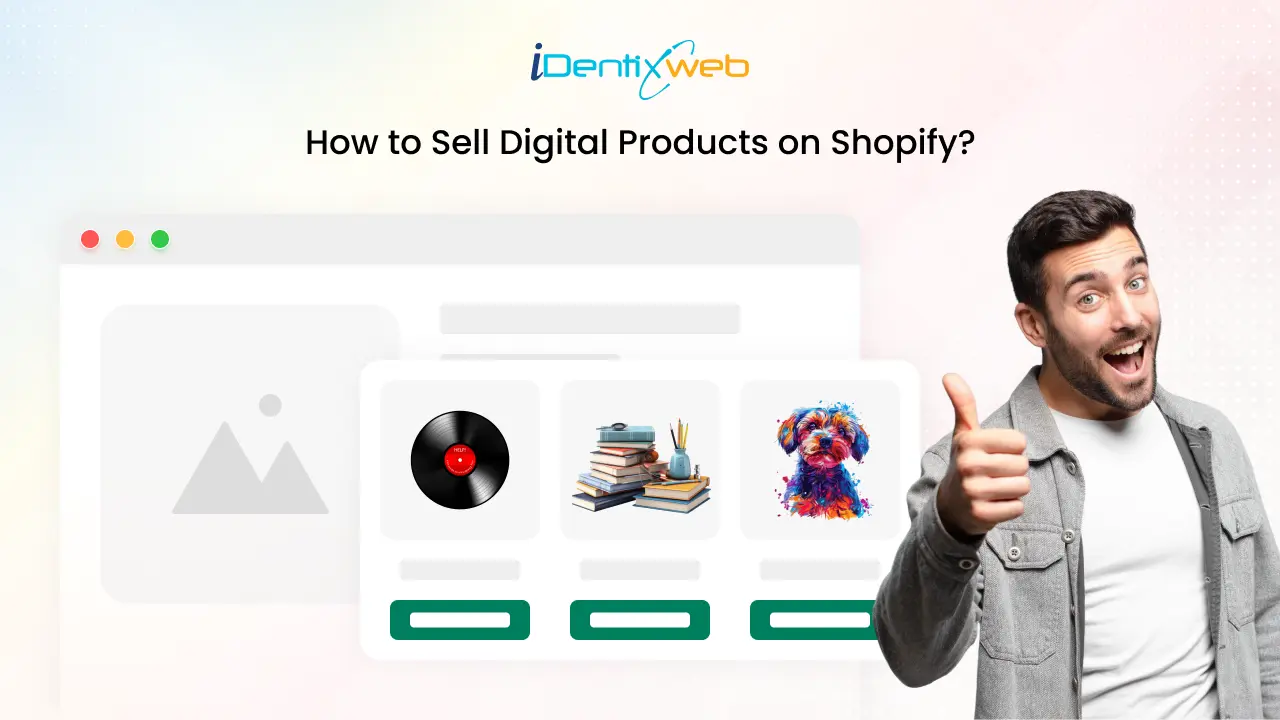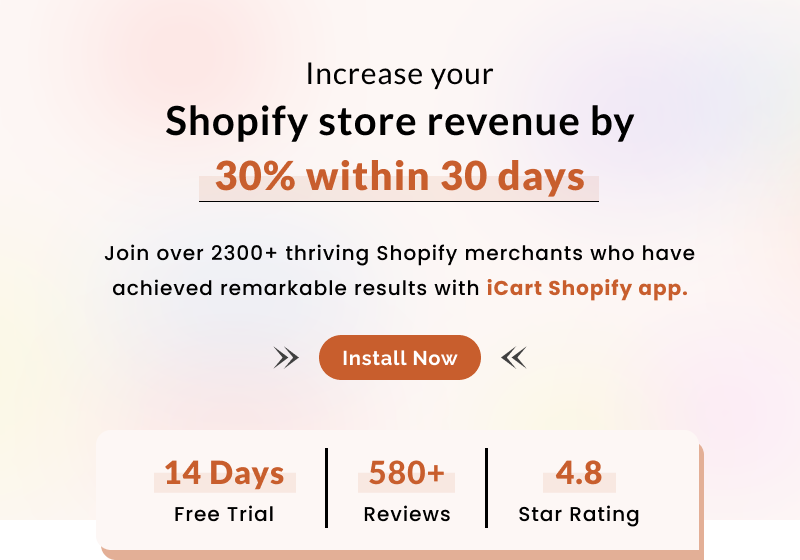
Many people misunderstand what omnichannel means in ecommerce. Omnichannel ecommerce is not just a tool and also not a temporary solution but a permanent opportunity that boosts customer engagement and builds brand loyalty.
This guide will explore its definition, challenges, and best practices and how businesses can create strategies for customer engagement and daily growth detection.
What is Omnichannel Ecommerce?
An approach that combines multiple channels, such as websites, mobile apps, social media, emails, and physical stores, provides customers with a better shopping experience than all other platforms.
Let’s understand this with the example,
Amazon: Amazon offers a consistent shopping experience across its website, mobile app, and Alexa devices, and it offers a wide array of products and services.
How to Design an Omnichannel Strategy That Works
Here is the process that defines the best strategy to improve your business:
Know Your Customer Journey
If you want to implement this strategy, you must first be aware of how people interact with your brand from start to end. Because we explore e-commerce and find that every customer’s journey is different, understanding these steps helps you improve their experience.
Example: Just think about you have an electronics store, and there is a customer’s journey that might look like this:
- They see an Instagram ad for a new smartphone.
- They visit your website to check reviews, features, and prices.
- They go to your store to test the phone in person.
- Instead of buying in-store, they order it online for home delivery.
- After the purchase, they get an email with setup tips and accessory suggestions.
Connect All Sales Channels
Customers should be able to switch between online, in-store, social media, and mobile shopping without risk. This experience should keep them engaged and make shopping quicker.
Example: Imagine you run a clothing store with both a website and physical locations. Your customers should be able to:
- Buy online and pick up in-store (BOPIS).
- Check online if their favorite jeans are available at a nearby store.
- Return an online order at any physical location.
- Get the same discounts and deals whether they shop online or in-store.
Leverage Data and Personalization
Customers always want an easy way to find their choices, so they love to find a brand’s remember and suggest preferences they like most. With an omnichannel approach, you can collect data from many sources, such as your website, app, emails, and even social media, to make shopping more personal.
Example: Assume Netflix is recommending shows just for you, based on what you have already watched. ecommerce stores can do the same:
- Send emails with product recommendations based on what a customer recently viewed.
- Show Instagram or Facebook ads featuring items they browsed but didn’t buy.
- Offer a special discount on a product they were interested in.
Test and Optimize
These strategies need to be analysed and updated daily. It is crucial to know whether everything is working well, so tracking results and adjusting as needed is essential.
Example: Think about how you run an online furniture store and focus on those few customers who add items to their cart but do not complete the purchase. After testing different solutions, you discover that:
- Adding live chat support on the checkout page helps answer last-minute questions and boosts sales.
- It allows Free shipping on orders over $100, encouraging customers to complete their purchase.
- It supports sending an automated WhatsApp reminder, which helps recover 20% of abandoned carts.
Offer Flexible Payment & Delivery Options
Customers search for flexible payment and delivery options that suit their needs. If we define the easier way to this process, it is easier to make it complete their purchase.
Example: Consider a grocery store that sells both online and in-store options. To make shopping fast, they offer:
- Payment options must be provided, including credit/debit cards, PayPal, Apple Pay, and BNPL.
- Multiple delivery choices, including home delivery, in-store pickup, and curbside pickup.
- Subscription services for essentials so customers can get regular deliveries without reordering every time.
Challenges in Omnichannel Ecommerce and How to Overcome Them
Here are some challenges and omnichannel ecommerce solutions to give you the proper results.
Data Integration Issues
Omnichannel ecommerce gathers data from websites, apps, social media, and physical stores. If these systems don’t connect properly, customer data can get messy and cause issues during shopping.
Solutions:
- A centralized Customer Relationship Management system can sync customer data in real time.
- You need to decide and choose cloud-based tools that integrate smoothly with all sales channels.
- It is necessary to regularly check and clean your data to keep it accurate and up to date.
Inventory Management Complexity
Keeping stock levels can be challenging when selling across multiple platforms. Without proper inventory management, businesses risk overselling or running out of stock unexpectedly.
Solutions:
- Use an inventory management system that updates stock levels in real time across all channels.
- Set up automated alerts for low-stock items to restock efficiently.
- Implement a unified fulfillment strategy to streamline order processing.
Consistent Branding Across Channels
Customers want a consistent experience wherever they shop. If branding, messages, or promotions look different across platforms, it can be confusing and reduce trust in the brand.
Solutions:
- Maintain a consistent tone, color scheme, and logo across all channels.
- Align marketing campaigns so promotions run simultaneously across platforms.
- Train employees to ensure in-store experiences match the online brand voice.
Managing Customer Expectations
Shoppers need a quick and easy shopping experience. They expect fast responses, flexible options, and a smooth online and in-store process. If these expectations are not fulfilled, they may feel frustrated.
Solutions:
- Provide support through live chat, email, and social media.
- Just clearly explain shipping, returns, and pickup options.
- Use chatbots or AI assistants to answer common questions instantly.
Security & Data Privacy Concerns
Many things are intentionally done to ensure data safety, such as customers wanting to feel safe shopping online. Managing data across multiple platforms can increase security risks, so businesses must protect customer information and build trust.
Solutions:
- Using secure payment gateways and two-factor authentication.
- Remind and regularly update security measures and follow data protection laws.
- You should train employees on cybersecurity to prevent data leaks.
Technology Integration Challenges
When browsing and seeing others, Many businesses use different tools for orders, customer service, and marketing. If these systems don’t connect properly, delays and mistakes can occur.
Solutions:
- Just focus on an omnichannel ecommerce platform that easily integrates with other tools.
- Remember, work with a developer to connect systems for smooth data sharing.
- Always keep software updated to avoid compatibility issues.
What are the Best Practices for Implementing Omnichannel Ecommerce
Here are some Key pointers to implement and build your business:
Invest in the Right Technology
If you want to experience omnichannel, you need to find better tools to connect all your sales channels, manage customer interactions, and optimise order fulfillment.
How to Do It:
- Just focus on an omnichannel ecommerce platform that easily integrates with other tools.
- Remember, work with a developer to connect systems for smooth data sharing.
- Always keep software updated to avoid compatibility issues.
Adopt a Customer-Centric Approach
Every customer needs to have a flexible shopping experience, whether it is online or in-store. To reach these expectations, it is focusable to understand how they shop and what they prefer. It is created when analysing customer behavior, which allows you to edit your services to provide an experience over all channels.
How to Do It:
- It should offer multiple shopping options, such as online pickup in-store or home delivery.
- It must provide customized recommendations based on browsing and purchase history.
- Offer support through live chat, social media, email, and phone to make customer service easily accessible.
Train Your Team for Consistency
We always know that preparing yourself is the first step to achieving the result. Then, it is necessary to ready your staff to handle omnichannel procedures, which is key to delivering a sleek and consistent customer experience with all platforms.
How to Do It:
- Ready your customer service team to provide consistent support across all channels.
- It should educate store staff on handling online orders, returns, and customer inquiries.
- It can be to create a knowledge base with FAQs and troubleshooting guides for employees.
Seamlessly Integrate Sales Channels
All shopping channels should work together so customers can switch between them without friction. This integration improves convenience and supports repeat purchases.
How to Do It:
- Allow customers to check product availability in stores through the website.
- Enable cart syncing so shoppers can add items on one device and complete the purchase on another.
- Offer flexible delivery and return options across all sales channels.
Optimize Inventory and Fulfillment
It helps customers manage inventory to secure stockouts, overstocking, and fulfilment delays. This also includes having an inventory tracking system that allows them to accurately track products and customers over many channels.
How to Do It:
- Inventory management software needs to be used to update stock levels on all platforms.
- This allows warehouse automation to speed up order processing.
- Omnichannel ecommerce fulfillment options like home delivery, in-store pickup, and third-party shipping.
Must-Have Channels for Omnichannel Ecommerce Growth
Here are the important channels for omnichannel ecommerce growth:
Website & Mobile App
Your website and mobile app are the bases of your online presence. They are the leading platforms where customers browse products, purchase, and interact with your brand.
Why It is Important:
- It is performing as the primary storefront for online shoppers.
- It must provide complete control over branding, content, and customer experience.
- It allows for personalized recommendations and proper checkout.
Integrating social media platforms like Facebook, Instagram, TikTok, and Pinterest into your omnichannel retail strategy boosts customer engagement and streamlines the shopping experience.
Why It is Important:
- Helps reach a wider audience through organic and paid marketing.
- Enables direct shopping with features like Instagram Shopping and Facebook Marketplace.
- It is very important for customer engagement by comments, DMs, and live shopping events.
Online Marketplaces (Amazon, eBay, Etsy, Walmart)
Selling on online marketplaces like Amazon, eBay, Etsy, and Walmart allows businesses to reach a broad customer base without requiring shoppers to visit their own websites. These platforms offer tools for product discovery, brand awareness, and direct sales, enhancing visibility and accessibility.
Why It is Important:
- Expand your reach to customers who prefer marketplace shopping.
- This can provide credibility and trust with built-in customer reviews.
- This simplifies logistics with fulfillment services like Amazon FBA.
SMS & WhatsApp Marketing
Sending text messages via SMS and WhatsApp allows businesses to connect quickly and directly with customers, keeping them engaged and encouraging repeat business.
Why It is Important:
- This offers high open and response rates compared to email.
- This provides real-time updates on orders, shipping, and promotions.
- It enables two-way communication for customer support.
Customer Support Channels (Live Chat, Chatbots, Phone, Email Support)
Providing customer support for every channel so that it can be beneficial for customer trust and build shopping experience.
Why It is Important:
- Resolves customer inquiries quickly, reducing cart abandonment.
- Provides real-time assistance with live chat and chatbots.
- Enhance customer loyalty through excellent service.
Search Engines & SEO (Google Shopping, Organic Search, PPC Ads)
Integrating search engine strategies like Google Shopping, SEO, and PPC ads enhances product visibility. Google Shopping displays products directly in search results, while SEO improves organic rankings through keyword optimization. PPC ads provide immediate visibility by targeting specific keywords. Combining these approaches ensures products reach a wider audience, driving traffic and sales.
Why It is Important:
- Drives organic traffic through SEO-optimized product pages.
- Increases sales with Google Shopping and PPC ads.
- Enhances visibility when customers search for related products.
Wrapping Up
In today’s competitive market, gaining a strategic edge requires embracing an omnichannel e-commerce approach. This strategy integrates various platforms, social media, physical stores, Google Ads, and customized mobile designs to enhance the customer experience.
By thoughtfully integrating these elements, businesses can create a cohesive and engaging omnichannel experience that meets and exceeds customer expectations, driving sustained growth and success.
FAQs
1. Which industries benefit the most from e-commerce omnichannel?
Such as retail, fashion, electronics, beauty, and grocery businesses.
2. Can omnichannel strategies work for B2B ecommerce businesses?
Yes, integrating various channels, such as online portals, customer support, and personalized sales experiences, aligns with the evolving preferences of B2B buyers, who increasingly utilize multiple touchpoints throughout their purchasing journey.
3. What are some examples of successful omnichannel ecommerce?
Brands like Gucci and Walmart have integrated their online and physical stores to provide better shopping experiences.
4. How do omnichannel strategies benefit customers?
Omnichannel strategies provide customers with a seamless and consistent shopping experience across multiple channels. This approach enhances convenience, personalization, and engagement, increasing customer satisfaction and loyalty.










About the author
Bhavesha Ghatode
Explore Content with Bhavesha, a passionate and dedicated technical content writer with a keen understanding of e-commerce trends. She is committed to sharing valuable insights, practical assets, and the latest trends that can help businesses thrive in a competitive environment.